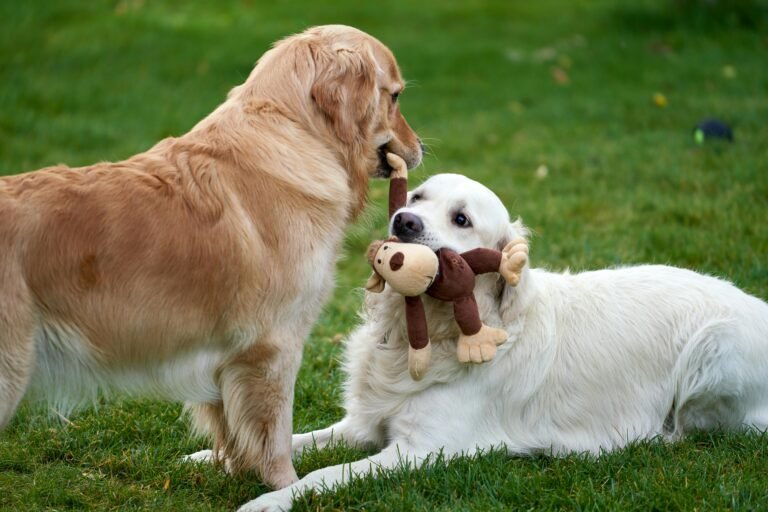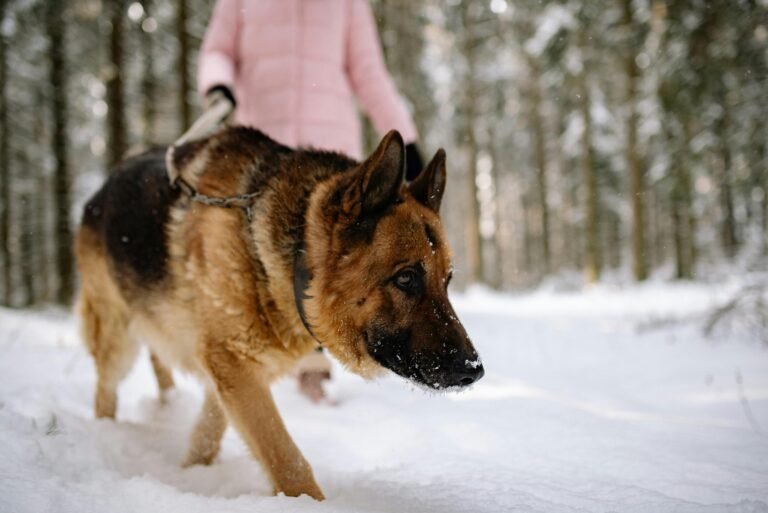Introduction
Have you ever noticed how your dog seems to know exactly how you’re feeling — often before you say a word? Maybe they rush over when you’re sad, wag their tail when you laugh, or tilt their head when you look puzzled. It’s not magic; it’s empathy. Over thousands of years of companionship, dogs have evolved an incredible ability to read human faces. They don’t just recognize our expressions — they interpret them, feel them, and often respond in ways that mirror our emotions. Here’s how dogs decode our faces, and why it matters more than you think.
The Science Behind Canine Emotional Reading
Dogs are the only species that has evolved specifically alongside humans — not just physically, but emotionally. Over time, they’ve become experts at reading our social and emotional cues. Research using brain imaging (like fMRI scans) shows that dogs activate similar parts of their brain when they see human facial expressions as humans do when reading other people’s emotions.
In one study, dogs were shown images of their owners making happy, angry, or neutral faces. They reacted with distinct emotional and physiological responses — excitement toward happy faces, hesitation or stress toward angry ones. This proves what most dog owners already know instinctively: dogs don’t just see us; they understand us.
How Dogs Interpret Different Emotions
Dogs read our faces holistically — not just eyes or mouth, but the entire combination of expression, tone, and body language. Here’s how they process the emotions we show every day:
- Happiness: Smiling faces, relaxed posture, and higher-pitched voices trigger tail wags, relaxed ears, and joyful body movement. Dogs associate smiling with safety and affection.
- Anger or Frustration: A tense jaw, furrowed brow, or loud voice can immediately trigger avoidance or appeasement gestures — ears back, licking lips, or turning away. They feel your tension and mirror it.
- Sadness: When they sense tears, frowns, or drooping shoulders, many dogs approach gently, resting their head on your lap or pawing softly. They don’t “understand” sadness the way humans do — but they recognize the emotional energy and respond with comfort.
- Fear or Anxiety: Dogs pick up on subtle cues like widened eyes, stiff movements, or shaky breathing. In many cases, they either try to comfort you or mirror your fear, becoming tense themselves.
- Surprise or Curiosity: Raised eyebrows, open mouths, and sudden shifts in attention make dogs perk up and look alert — they’re trying to figure out if something exciting or threatening is happening.
Dogs don’t read expressions in isolation. They combine facial reading with tone, scent, and energy — a multi-sensory understanding far beyond what humans can do consciously.
How Dogs Learned to Read Us
This ability didn’t appear overnight. It’s the result of 30,000 years of co-evolution. Early domesticated dogs that were better at interpreting human emotions had a survival advantage — they were more likely to be fed, protected, and included in the pack.
Over generations, dogs became attuned to micro-expressions — the tiny muscle movements that flash across our faces before we even speak. That’s why they sometimes react to your emotions before you’re fully aware of them yourself. Your dog knows when you’re upset, often before you’ve processed it.
The Power of Eye Contact
Eye contact plays a huge role in how dogs read our emotions. Studies show that mutual gaze between dogs and their owners increases levels of oxytocin — the “bonding hormone” responsible for attachment and trust. It’s the same hormone released between parents and infants during nurturing moments.
When your dog looks into your eyes, they’re not just waiting for cues — they’re connecting emotionally. They can sense calm, fear, happiness, or sadness through subtle muscle shifts around your eyes and mouth. That’s why dogs often avert their gaze when you’re angry — not out of guilt, but as a form of respectful de-escalation.
Left Brain, Right Brain: The Neurological Secret
Here’s something fascinating: dogs use different sides of their brains to process human emotions. They tend to look at the left side of our faces first — the side humans express emotion more strongly on. This “left gaze bias” is something even chimpanzees don’t show, and it highlights how specialized dogs have become in reading us.
When dogs view happy faces, the reward centers of their brains light up. When they see angry or fearful faces, the stress-related amygdala activates. It’s not instinct alone — it’s empathy encoded into biology.
Dogs and the Energy We Project
Beyond expressions, dogs sense emotion through what we might call “energy” — tone, posture, and breathing rhythm. A calm, confident human communicates safety; a nervous one communicates uncertainty. Dogs mirror this energy. That’s why anxious owners often have anxious dogs — they’re emotional barometers, not just companions.
Your energy teaches your dog how to interpret the world. If you react calmly to a stressful event, they learn to relax too. It’s emotional co-regulation — a quiet exchange that strengthens the human-dog bond.
When Dogs Misread Us
Despite their emotional intelligence, dogs can occasionally misinterpret our signals — especially when we use conflicting cues. For instance, a human who laughs nervously while scolding may send mixed messages. The body says “tension,” but the voice says “fun.” To a dog, that’s confusing.
Likewise, forced smiles, loud excitement, or staring too long can be overwhelming for shy or sensitive dogs. They may respond with avoidance or appeasement — behaviors often mistaken for guilt or stubbornness.
Understanding how dogs process our expressions helps us communicate clearly — matching tone, body, and emotion to create harmony instead of confusion.
How to Improve Your Emotional Communication
You can strengthen your dog’s ability to read you — and your own ability to read them — with mindful interaction. Here’s how:
- Practice calm awareness: Dogs respond best to steady energy. Before giving cues or corrections, take a breath and center yourself.
- Use consistent facial cues: Smile genuinely when praising, and soften your eyes when giving reassurance.
- Maintain gentle eye contact: It deepens trust and emotional bonding without intimidation.
- Match your tone to your expression: Dogs rely on congruence — if your body and voice align, they’ll understand faster.
- Observe their reaction: Your dog will often mirror your emotions — notice what they reflect back to you.
Emotional communication with dogs isn’t about dominance or control — it’s about connection. The more aligned your signals, the stronger your relationship becomes.
Why Dogs React to Our Faces More Than Other Animals
Unlike other pets, dogs evolved to live inside our emotional worlds. Cats may observe us; dogs join us. They’ve learned to synchronize with human emotion — not just for survival, but because it’s rewarding. Dogs love seeing us happy; it’s their version of social success.
This explains why many dogs comfort crying humans, react to laughter with excitement, and sense emotional tension during arguments. They don’t understand words, but they absolutely understand faces — the language of feeling.
Conclusion
Your dog doesn’t need words to understand you. Every glance, smile, and sigh tells them a story — one they’re fluent in. Through evolution and empathy, dogs have become experts at reading the human heart through facial expression and tone. When they look into your eyes, they see more than a face — they see home, emotion, and belonging.
So the next time your dog tilts their head or locks eyes with you, remember — they’re not just watching. They’re feeling. They’re reading the silent language that’s existed between humans and dogs for thousands of years: love, trust, and understanding, written across your face.



